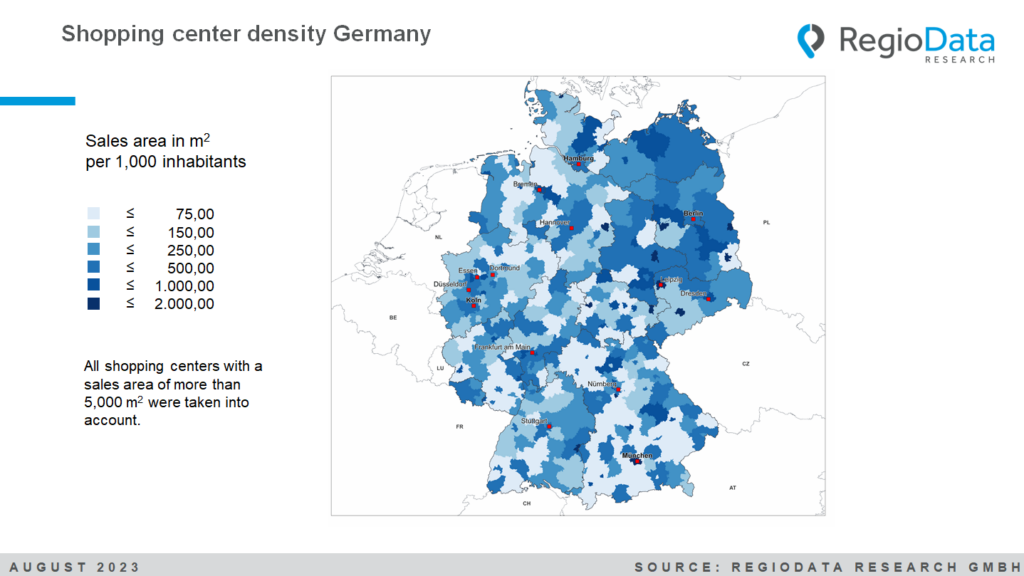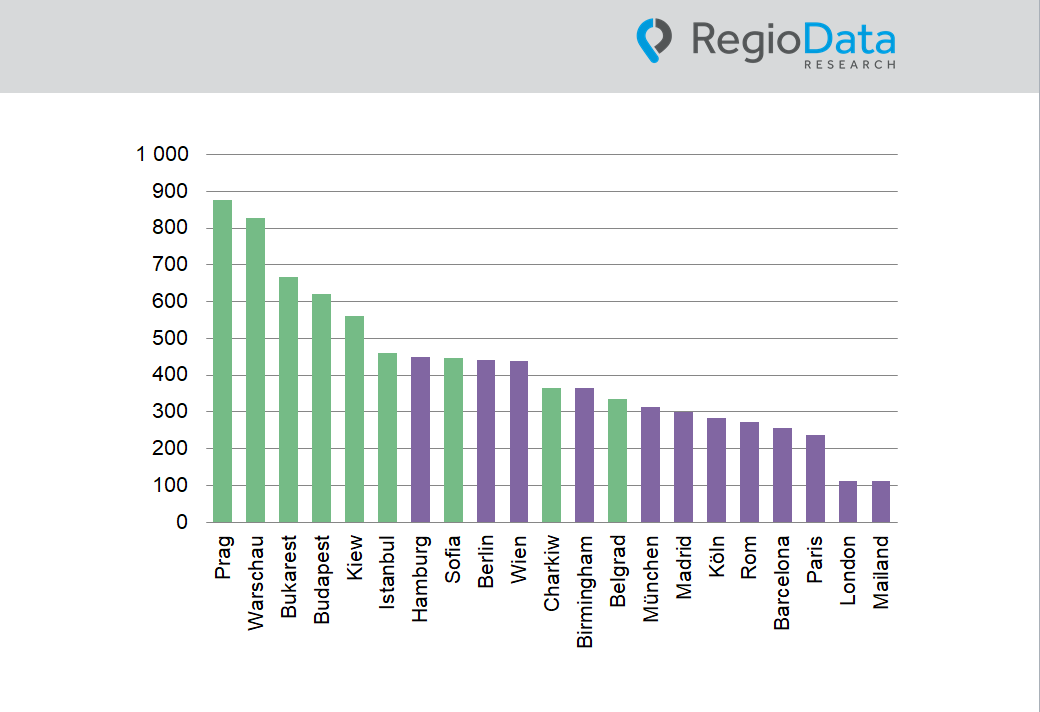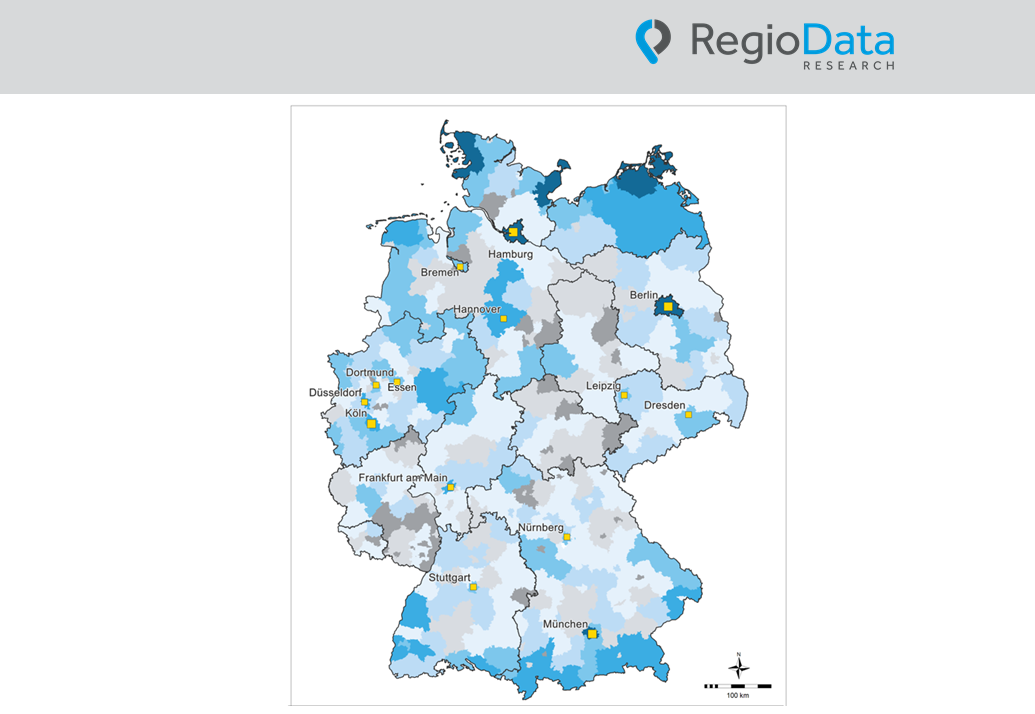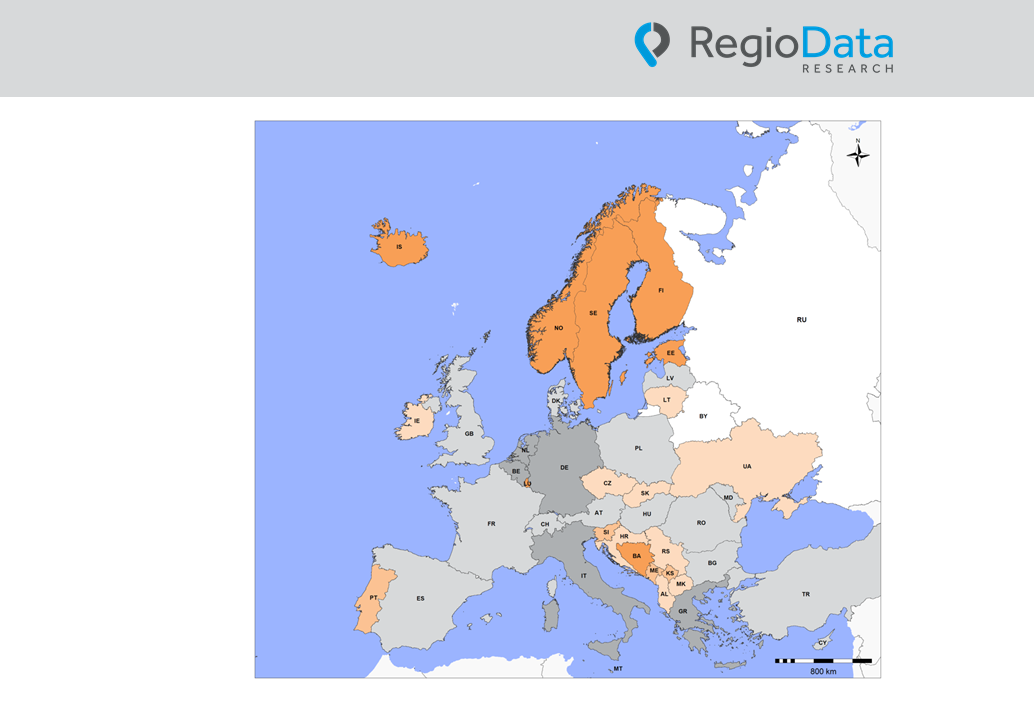Germany
Shopping center: Highest density in the new federal states
Is it a spurious correlation? The lower the purchasing power, the more shopping centers. This correlation is evident in Germany at both the federal state level and the district or city level.
Now, the historical explanations are quite well-known. However, what’s interesting is that even after more than three decades since the fall of the Berlin Wall, there has been little change in the structures. The differences in purchasing power between the old and the new federal states are still very evident, and the large-scale retail zones that were rapidly created at that time – mostly on the outskirts of cities, because the ownership situation in the center had not been clarified – still exist after 25-30 years in most cases, but with problems that are probably becoming even greater.
And so it happens that the majority of shopping center space is available to the residents of Leipzig and Dresden, which makes them the cities with the highest retail space density nationwide in Germany.
On the other hand, there are surprisingly few shopping centers, especially in the wealthy areas in the south of the country. In Baden-Württemberg and Bavaria, the density is well below the national average. One possible explanation is that, particularly in the south, there are often still well-functioning established retail zones that are good at retaining purchasing power. In contrast, the retail structure in the new federal states was more than weak at the time due to the system, which naturally favored the emergence of shopping centers.
These data come from the RegioData Shopping Center Collection, which for the first time analyzed the sales areas of more than 1,500 shopping centers (shopping malls, retail parks, factory outlet centers and hypermarkets) with more than 5,000 m² GLA.
share post




